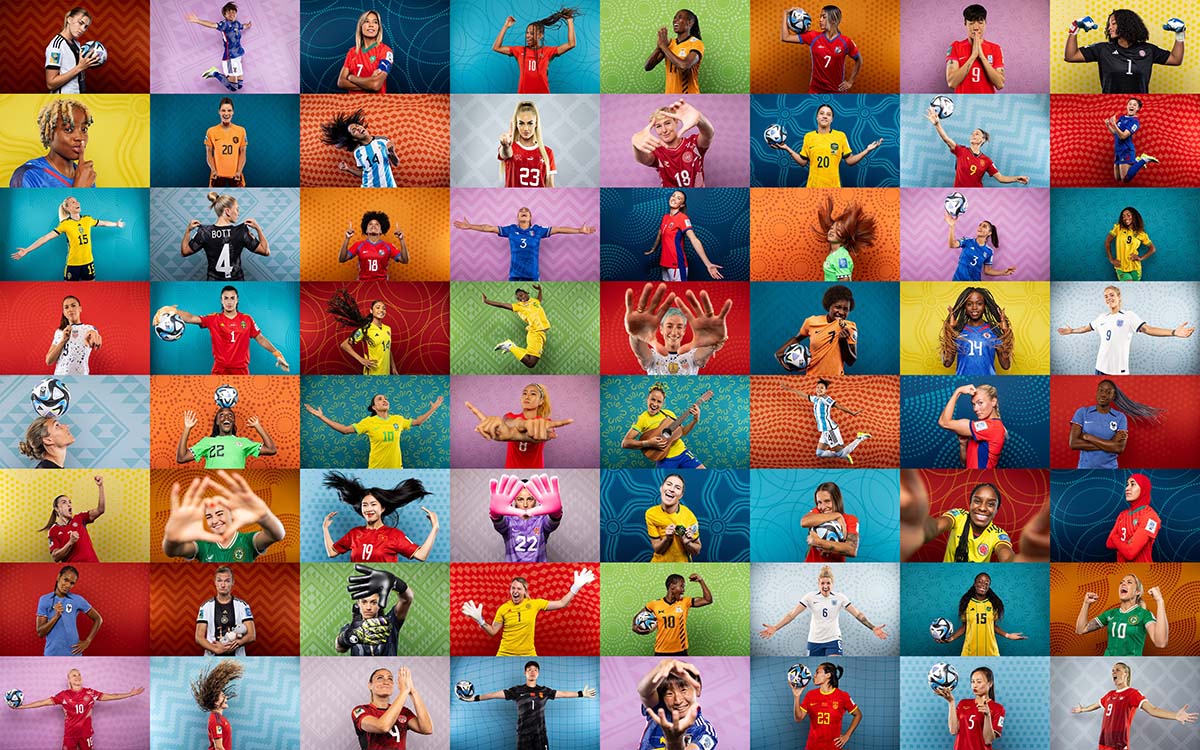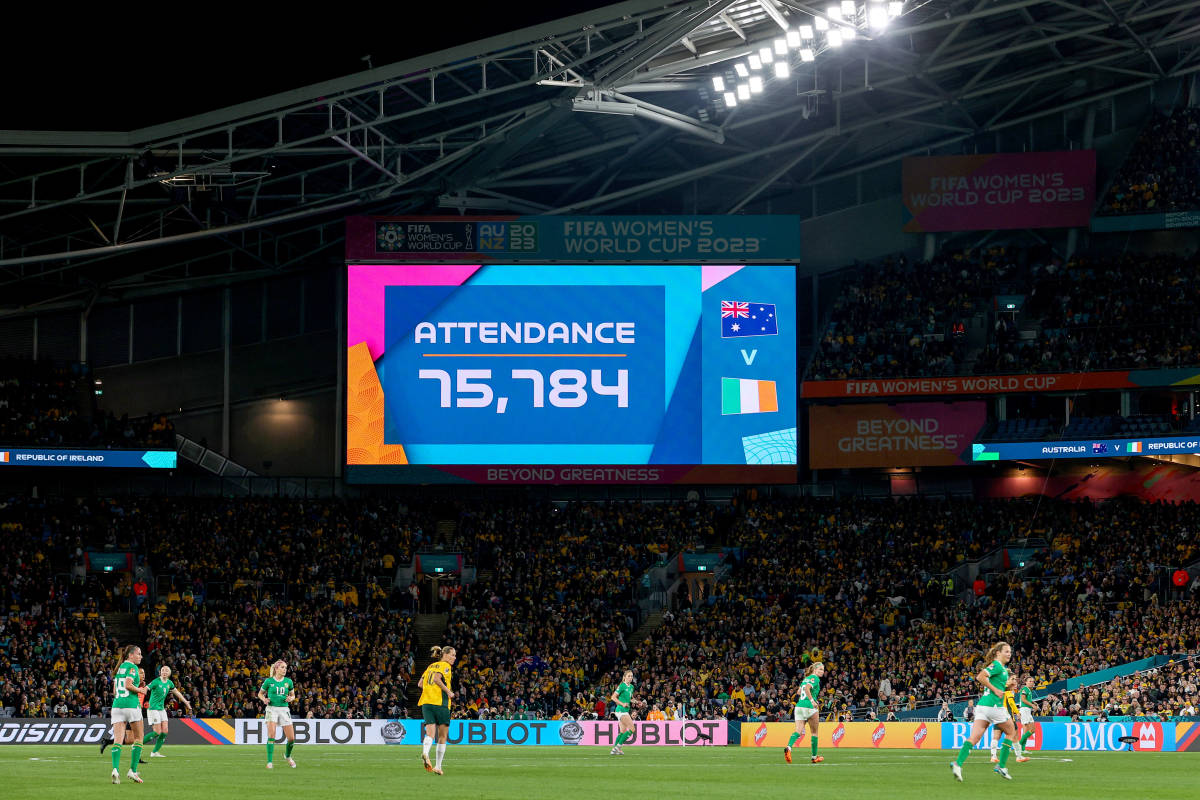Not only did the 2023 Women’s World Cup co-hosted by Australia and New Zealand break multiple records worldwide, but it also marked the biggest women’s soccer event we have ever seen. From the teams attending, TV shares, goals, and other stats, here are the most important numbers from this year’s tournament.
32: The Most Participating Teams

The 2023 FIFA Women’s World Cup saw an expansion to 32 teams, up from 24 four years ago. The decision to add more participating nations divided some opinions, however. One reason brought up against the extension was the lack of representation of women’s soccer in smaller countries. There was a fear of a clear division between the teams who have already participated in the competition multiple times and the newcomers which could potentially affect the overall quality of the tournament.
On the other hand, there was an opportunity for those lesser-known countries in women’s soccer who would get the chance to make their appearance at the biggest stage in the world. This would not only show the residents in those countries that women’s soccer is a force to be reckoned with, but would hopefully also enhance the situation of the sport or kickstart its popularity.
Before the start of this year’s World Cup, countries like Morocco were working their way up the ladder of women’s football. The last Women’s Africa Cup of Nations was held in Morocco which again helped to support the women’s game — to a point where the Moulay Abdellah Stadium in capital Rabat was filled for every single match. Surprisingly, the Atlas Lionesses defeated Nigeria in a penalty shootout in the semifinal en route to a runner-up finish behind South Africa.
This achievement meant that they would participate for the first time ever in a World Cup. They went on to push their limits by making it past the group stage competing against teams of the likes of Germany and South Korea. Despite losing in the round of 16 to France, the impact women’s football has had on the country is undeniable.
Other teams who made their first appearance this year include Ireland, Panama, Haiti, the Philippines, Portugal, Vietnam and Zambia, all of which had their moments to leave a mark. Any talk of “smaller” countries diluting the quality of play can surely be dismissed.
17.15 million: The Biggest Event in Australian TV History
There was a lot of pressure on the Australian women’s national team at their home tournament. The FIFA No. 10-ranked Matildas were in a position to make a deep run, but it wasn’t going to be an easy route. Captain and iconic striker Sam Kerr would be unavailable through the group stage, which included matches against fellow top-10 nation Canada and tough Nigeria and Ireland sides.
Australia didn’t disappoint however, and while a semifinal defeat to eventual runners-up England left a bitter taste in their mouths, it was an unequivocal rousing success for the co-hosting nation.
The best indicator for this is the number of people who watched their semifinal showdown against England. With 11.15 million people having seen the match on Channel 7 alone, this marked the most watched event in Australian TV history – not just women’s football or any other sport, but any TV program.
According to a Deakin University survey there was an estimated 17.15 million people in the country who tuned into Australia against England, whether via TV, venues and live-sites, which translates to a whopping 64% market share.
For a country like Australia where soccer normally lines up behind Australian football and cricket, this serves as a major achievement for not only women’s soccer but women’s sport in general. With the Matildas achieving great success and the individual players serving as role models, the status of the women’s team has reached a level that has never been seen before.
164: A New High Score
One aspect that significantly added to the spectacle of this year’s World Cup was the quality of every single game that was played. Global powerhouses and newcomers alike rose to the occasion of playing on the world’s biggest stage, which meant plenty of bangers — the 164 total goals scored was a record in itself.
The first one that comes to mind is the stunner scored by Panama’s Marta Cox. Her free kick out of 30 yards sensationally found the back of the net only two minutes into the game against France. Even thought they went on to lose 6-3 to Les Bleus, this marked a significant moment for Panama, as it was the first goal the country ever scored at a Women’s World Cup.
When talking about a country’s debut goal, Ireland captain Katie McCabe’s olimpico has to be mentioned. The Arsenal defender put the perfect amount of spin onto the ball, resulting in a curling screamer that gave Ireland an early lead against Canada.
To add a third to the race for the most beautiful shot during the competition, it is important to understand the circumstances it was scored in. Australian captain Kerr, who had missed all group matches due to an injury, for the first time was part of the starting lineup in the semifinal against England.
After the Lionesses had taken the lead in the first half, Kerr got the opportunity to show all her class when she went into a 1v1 against Chelsea teammate Millie Bright. Instead of crossing the ball to Caitlin Foord to her left, Kerr decided to go for the distance shot which went straight to the back of the net with no chance for England keeper Mary Earps.
1.77 Million: Tickets Sold (And More)

Not only did the quality of soccer being played on the pitch improve at the 2023 World Cup, but there were also a lot of people ready to show up in the stadiums to enjoy and support the cause.
On August 15, FIFA announced that already 1.77 million tickets had been sold for the first 60 games — when there were still four more to go. This is already a major step forward for a Women’s World Cup. Four years ago, for the tournament in France the final numbers were at 1.13 million.
Even when the tournament had not yet started, Football Australia had announced the benchmark of reaching 1.5 million sales.
Overall, by seeing the development of women’s soccer through these numbers it is safe to say that the sport keeps on entertaining more and more people while also delivering strong performances on the grass. It will be interesting to see if the next host nation(s) will be able to keep up with the example of Australia and New Zealand.








